
The world's first virtual felting camp
April 16-27, 2021

The Story:
Five talented felting artists come to your home with full day virtual workshops!
Acorns & Twigs is working together with Corinna Nitschman to bring to you a one of a kind, virtual felting camp.
Spend a week emerged in wool, suds and good company.
For all of our North American friends, we have stocked our store with special order items just for you so you can join these classes without any hurdles!
If you haven't purchased your camp ticket yet, make sure to do so right away!
Things you probably already have around the house, as well as typical wet felting tools and supplies that you will need:
- Felting Underlay (for example IKEA’s VARIERA bumpy draw mats, a bamboo place mat, or rubber friction mats)
- Small pointy scissors, large sharp scissors
- Soap
- Synthetic netting to cover your work
- Towels
- Cotton cloth for rolling
- Optional wooden friction tools
- Bowls for water
- Sewing needle and string
- Paper and pens for planning
- Tape measurer and ruler
- Compass (for drawing circles)
These general wet felting supplies are available through Acorns & Twigs:
Felt Jewelry w/ Pebble Inlay
with Aniko Boros
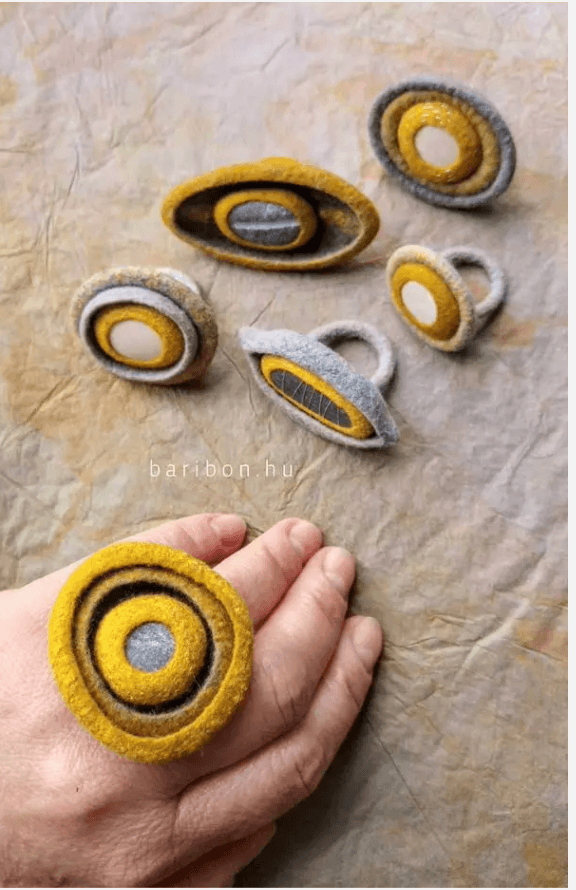
For one brooch and two rings (materials are enough to make these pieces, please adjust according to your liking):
- 20g (0.71 ounce) 14 mic wool top (Brooch: 10g, the complicated ring: 5g, the simple ring approx. 3g.)
Anikó dyes her wool herself.
- Rocks, soft edged glass, shells, porcelain pieces or anything else you’d like to felt into your jewelry.
- Thin, flat (not bubble wrapping) sturdy/robust plastic film for your pattern - Anikó uses the protective sheets between plates that you get when you buy dishes (for example at IKEA)
These items are available through Acorns & Twigs:
Delicate Leaf Patterned Felt Shawl
with Nadia Szabó
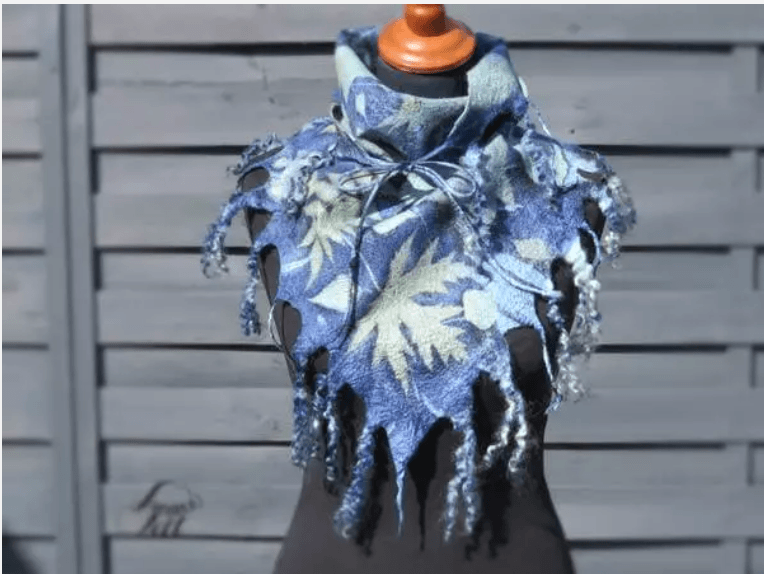
You will felt a triangular, delicate Nuno scarf and you will decorate it with leaves and then dye it.
- 40-50g (1.4-1.7 oz) 18 mic white wool top, if you have finer wool, that will work too - so you don’t have to buy 18 mic
- Long white wool locks, if you want to use them. Wensleydale, Teeswater are good examples.
- Approx. 1m x 1m (40” x 40”) light silk cloth. Margilan silk is used in the class. Ponge 05 or Chiffon are also great options. You can also replace wool locks with silk!
- Two acid dyes (for example from Ashford or Jaquard). It can be complementary colors, as well as monochrome with a light and dark version - or just pick two of your favorite colors!
- Two glasses to mix the dyes in along with a spoon
- 20% Vinegar Essence
- 1 package of thin viscose wash cloths. Nothing spongy, rather something that is very thin. You can also use paper towels, but the difference is that the wash cloths can be reused several times. But for your first experiment, it’s absolutely ok just grab paper towels out of your kitchen.
- Optional: a mocca spoon of iron sulphate to stain your fabric, but this is not necessary. It will make some leaf presses turn dark/grey, but not all leaves react, for example nut leaves. The results without iron sulphate are just as effective and beautiful.
- Painting plastic cover up AND saran wrap AND a large garbage bag (preferably dark / black, which will help when laying out your wool).
- approx. min. 1m x 1m (40 x 40”) bubble wrapping
- Fluid soap or dishwasher soap, but not balsam and an empty water bottle or similar for spraying water onto your wool.
- Fresh leaves from the garden or near by park. You can also use dried leaves, that have been soaked a day before. Tip: Nut, Rose, Maple leave guaranteed a very clear print, but really ANY leaf will work - choose shapes that speak to you!
- Ruber gloves
- A bucket or large bowl to immerse the cloth into the dye
These items are available through Acorns & Twigs:
Checkered Ball
with Gabriella Kovács
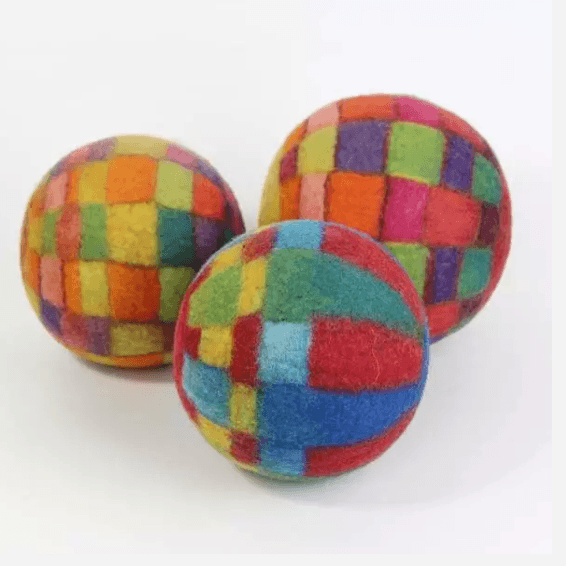
For one checkered ball you will need....
- 150g (5.3 oz) wool batt - any rest pieces that you might have collected, for the inner part of the ball (you won't see these later)
- 75g (2.6 oz) wool top, approx. 19 mic for your outer design. For more appealing color gradients on the ball, separate this amount into 3-4 color tones, that run well into each other, for example from an orange-red color pallet.
- Another 75g (2.6 oz) approx. 19 mic wool top in either a complementary or a contrast color pallet to the first 75g. For example blue-green color pallet.
- Approx. 50g (1.8 oz) wool top, 19 mic, in a color that goes well with the other colors you’ve chosen
- A tennis ball
- Pins
- A coarse felting needle for loose wool (no the design is not needle felted)
These items are available through Acorns & Twigs:
Fun Hand Puppets & Oven Gloves
with Bea Németh
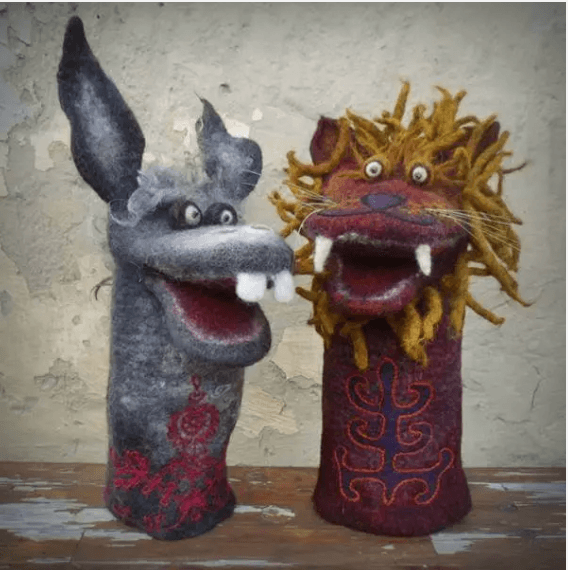
Bea will demonstrate making a wolf because it has the most diversity in materials and techniques (locks, individual teeth, tongue, 3D ears….).
If you do not have much practice yet, I recommend also doing the wolf. If you are more skilled with details, then feel free to get creative and follow along with the construction of the puppet, but try a different animal/creature.
Of course you can use the same pattern to make other animals such as a mouse, fox, dog, donkey…. All of these animals also have a similar muzzle/mouth.
In case you choose to make a fox, order wool with a red tone.
Shortly before the online class, Corinna will send out instructions on how to create the pattern before hand.
You will need:
- 300g (10.6 ounces) mountain sheep (coarse) wool in natural colors
- A bit of red wool
- A bit of white wool
- A thin felting needle for felted pre-felt pieces
- Flooring underlayment for the pattern
- Pearls, buttons, felted balls or loose wool for eyes
- Duck tape - or robust, wide tape that sticks even when wet
These items are available through Acorns & Twigs:
A Felt House
with Gabriella Kovács
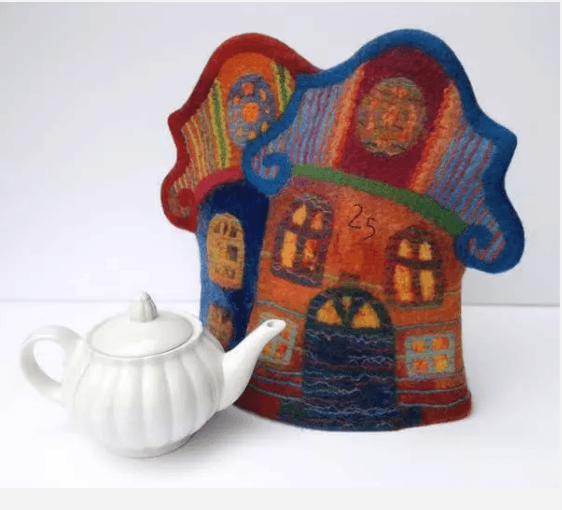
Your house can have two different sides.....
These items are available through Acorns & Twigs: